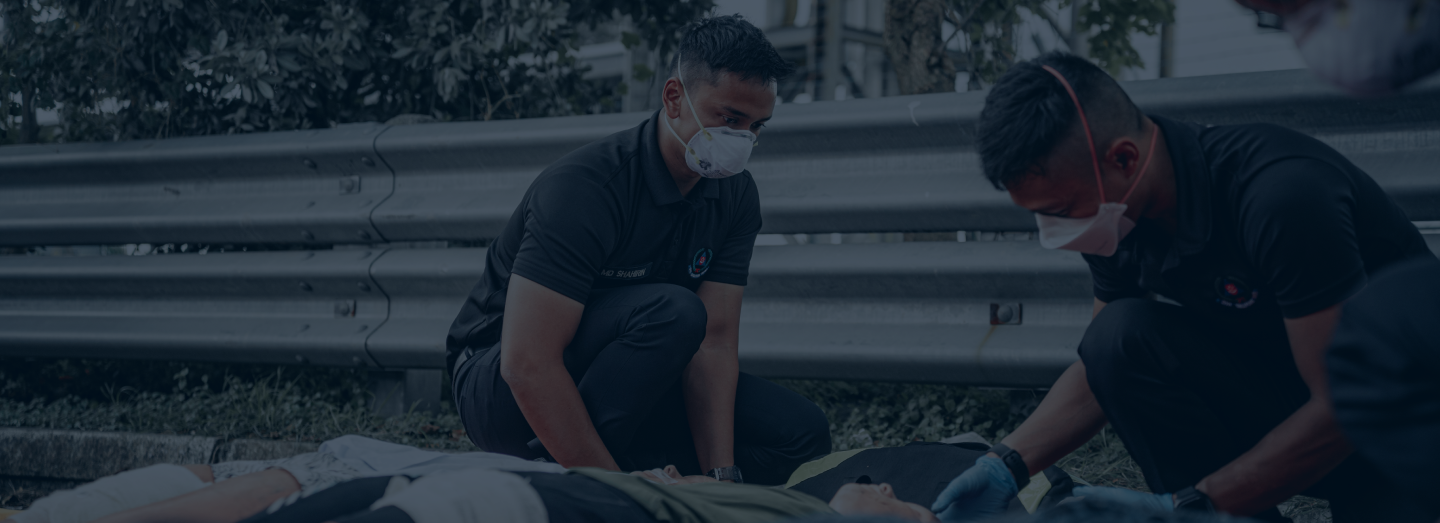b) The use of hose reels instead of water jets connected to the wet riser during the firefighting operation.
Deployment of SCDF emergency vehicles
SCDF deployed a total of 11 emergency vehicles to respond to the fire. One of the vehicles, a Combined Platform Ladder (CPL), had encountered difficulty entering the estate due to space constraints at one particular entrance.
Following investigations, SCDF ascertained that the entrance which the CPL had used was not meant for use by emergency vehicles. Under the 2007 Fire Code which applied to the building plan for “The Peak” at the time of its construction in 2012, designated entry and exit points were catered for emergency vehicles. However, the CPL had inadvertently attempted to enter the estate using the designated exit for emergency vehicles, as the 2007 Fire Code did not require signage to indicate the designated entry/exit points. The designated exit allowed for a sufficient turning radius for emergency vehicles to exit, but not for entering, due to other infrastructural constraints such as a linkway roof and road divider curbs. The CPL therefore was unable to enter via the designated exit as it did not have a sufficient turning radius and clearance. The other SCDF emergency vehicles which used the designated entry were able to reach the incident site without any issues.
Use of hose reels instead of water jets connected to the wet riser
As a general practice, SCDF simultaneously deploys the use of hose reels and water jets in firefighting operations. Hose reels are generally faster to operate but have a lower flow rate, which makes them more suitable for smaller fires and/or incidents which require fast responses. Water jets, which are connected to a wet riser, have a higher flow rate but require more time to set up. In the case of the fire at “The Peak”, SCDF officers could promptly enter one of the affected units to rescue two trapped persons with the use of hose reels. The fires at both HDB units were effectively extinguished using the hose reels.
In the course of the operation, SCDF discovered that the block’s wet riser was not functioning. SCDF has since issued a Fire Hazard Abatement Notice (FHAN) to the Bishan-Toa Payoh Town Council on 4 September 2020, requiring the Town Council to rectify the malfunctioning wet riser system. SCDF has confirmed that the Town Council has since rectified the issue and the wet riser in the affected block is now in proper working order. SCDF is still investigating the cause of the malfunction and will take further enforcement action against the responsible parties where necessary.
9 September 2020
